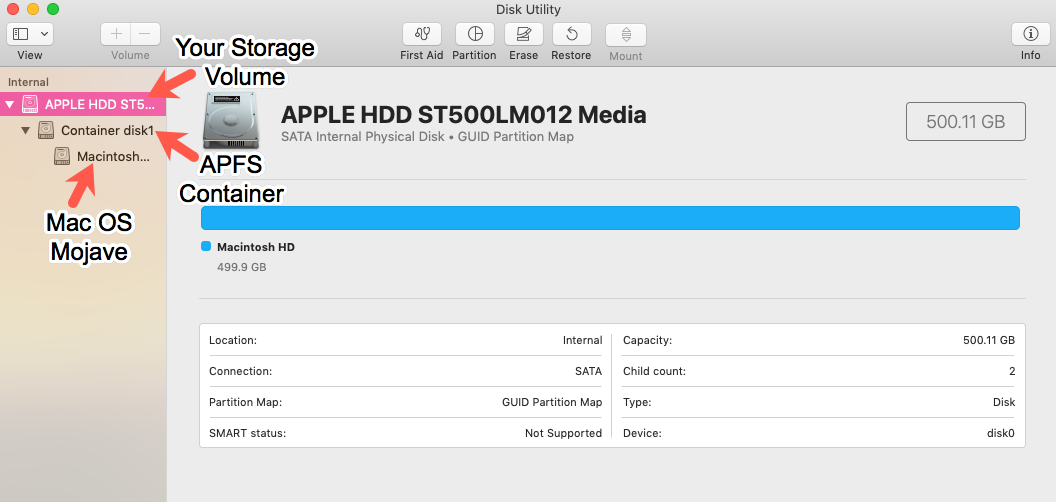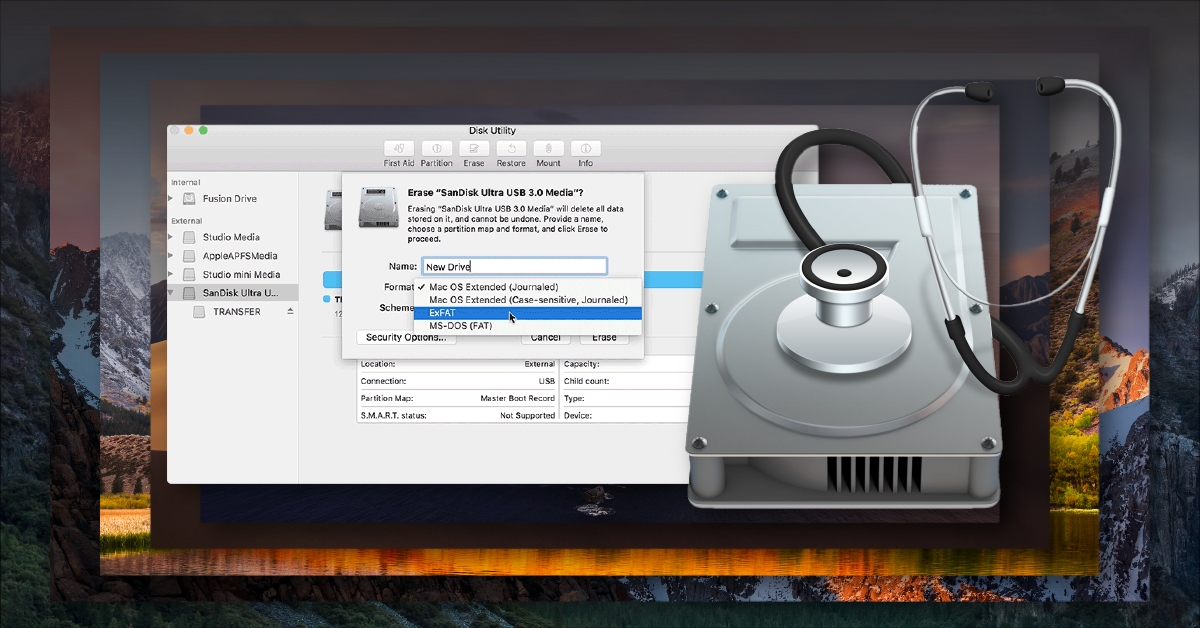

- #The best disk utility software for mac mojave how to#
- #The best disk utility software for mac mojave free#
#The best disk utility software for mac mojave free#
The diskutil secureErase command doesn’t erase the whole SSD, only free space, so it doesn’t destroy any keys if the SSD is already encrypted.

It then pretends to go ahead and reports that it has done what you asked – it doesn’t say that you’re silly and shouldn’t be doing that – which is very misleading. It explains to you what it would do if you were trying to secure erase a hard drive. However, what Disk Utility currently does is incorrect. I think that I do actually cover those points, and I quote Apple’s warning word for word. The workaround is to select the volume and use the Erase tool instead. This consistently results in the error shown below. In the next dropdown sheet, select Partition, then select the format for the partition. This occurs when you select the volume, container, or disk and use the Partition tool instead of Erase. It isn’t possible to encrypt an existing APFS volume non-destructively using Disk Utility, and in some cases when attempting to erase and reformat a volume, Disk Utility returns “an internal state error” and fails to perform the operation. Consider using APFS encryption (FileVault).” Strongly-encrypted data can be instantly “erased” by destroying (or losing) the key (password), because this renders your data irretrievable in practical terms. The modern solution for quickly and securely erasing your data is encryption. Modern devices have wear-leveling, block-sparing, and possibly-persistent cache hardware, which cannot be completely erased by these commands. “This kind of secure erase is no longer considered safe. The fourth option claims to perform a US DOD 7-pass secure erase, but actually performs the same volume removal and replacement as the default.ĭiskutil secureErase freespace 2 /Volumes/volumeNameīefore using diskutil secureErase, you should read man diskutil, where Apple cautions: Which would again be a very slow process. To perform the secure erase which it describes, you have to use the diskutil command in Terminal instead, using a command of the formĭiskutil secureErase freespace 4 /Volumes/volumeName

The third option claims to perform a DOE-compliant 3-pass secure erase, but actually performs the same volume removal and replacement as the default. Which would be expected to take several hours for a 1 TB USB 3 SSD. For a volume named volumeName, the two commands required to perform the advertised secure erase would beĭiskutil secureErase freespace 1 /Volumes/volumeNameĭiskutil secureErase freespace 0 /Volumes/volumeName To perform the secure erase which it describes, you have to use the diskutil command in Terminal instead. Disk Utility doesn’t overwrite any free space at all. Instead, according to its own commentary, it deletes the APFS volume completely, removes any Preboot and Recovery “directories”, then adds a new APFS volume in the chosen format, which is exactly the same process which is followed when no secure erase option is chosen, or the first option is chosen. The second option claims to overwrite the free space with random data (first pass), then with zeros (second pass). The first option (control at the far left) is the default, and doesn’t attempt any form of secure erase. These appear to work as claimed on conventional rotating hard disks, but work quite differently on SSDs. When you erase or format a disk in Disk Utility, there is a button offering Security Options for secure erase.

#The best disk utility software for mac mojave how to#
This article explains exactly what it does, how to perform what it doesn’t, and details another separate bug and its workaround. As mentioned earlier, Disk Utility 18.0 in macOS 10.14.2 Mojave doesn’t do what it claims when you select Security Options for formatting SSDs.


 0 kommentar(er)
0 kommentar(er)
